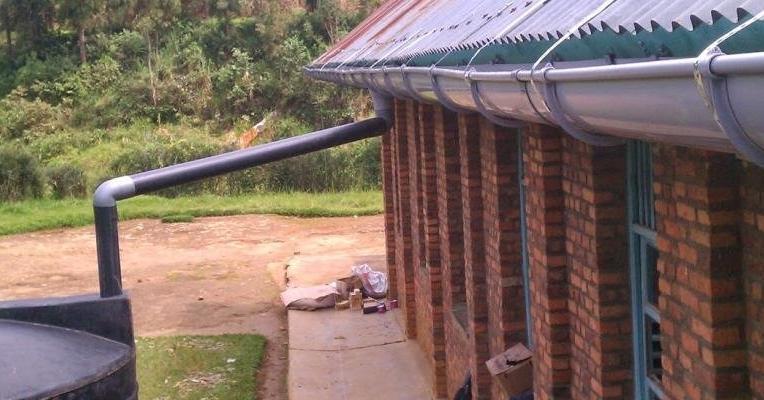Are you curious to know what is rooftop rainwater harvesting? You have come to the right place as I am going to tell you everything about rooftop rainwater harvesting in a very simple explanation. Without further discussion let’s begin to know what is rooftop rainwater harvesting?
Water scarcity is a global concern that calls for innovative solutions to preserve and efficiently manage this precious resource. One such solution gaining popularity is rooftop rainwater harvesting. This eco-friendly technique harnesses the power of nature to collect and store rainwater from rooftops for various uses, helping to alleviate water shortages and reduce strain on traditional water sources. In this blog post, we will delve into the concept of rooftop rainwater harvesting, its benefits, implementation, and its role in sustainable water management.
What Is Rooftop Rainwater Harvesting?
Rooftop rainwater harvesting is a method that involves collecting rainwater from the roofs of buildings, homes, and other structures. Rainwater, which would otherwise flow off and potentially lead to flooding or runoff pollution, is captured, stored, and used for various purposes. These include domestic use, irrigation, recharging groundwater, and even supplementing industrial and commercial needs.
Benefits Of Rooftop Rainwater Harvesting
- Conservation of Water: By capturing rainwater, we reduce our dependency on traditional water sources such as rivers and reservoirs, helping to mitigate water scarcity issues.
- Cost Savings: Harvesting rainwater can significantly reduce water bills, especially in regions with irregular water supply or high water costs.
- Groundwater Recharge: Recharging groundwater aquifers is vital for maintaining sustainable water levels and preventing land subsidence.
- Flood Mitigation: By harvesting rainwater, the volume of stormwater runoff is reduced, minimizing the risk of flooding during heavy rainfall.
- Reduction of Pollution: Rainwater harvesting prevents pollutants from being washed into rivers and streams, which contributes to better water quality in natural water bodies.
Implementation Of Rooftop Rainwater Harvesting
- Roof Catchment Area: The size and design of the roof impact the amount of rainwater collected. Smooth, clean surfaces like metal or tiled roofs are ideal.
- Gutters and Downspouts: Gutters collect rainwater and channel it to downspouts that lead to storage tanks or underground reservoirs.
- Leaf Screens and Filters: These prevent debris and leaves from entering the storage system, ensuring clean water collection.
- First Flush Diverters: These devices ensure that the initial runoff, which may contain pollutants, is diverted away before the clean rainwater is collected.
- Storage Tanks: Rainwater is stored in tanks made of plastic, concrete, or other suitable materials. These tanks can be placed above or below ground.
- Treatment and Distribution: Depending on the intended use, rainwater can be treated with filters or disinfection systems before being distributed for various purposes.
Global Examples Of Rooftop Rainwater Harvesting
- Singapore: Due to limited land area and water resources, Singapore mandates rooftop rainwater harvesting for new buildings to ensure self-sufficiency in water supply.
- India: In regions with erratic monsoons, like Chennai, rooftop rainwater harvesting has been promoted as a vital water conservation measure.
- Australia: Many households and communities in Australia practice rainwater harvesting to address water scarcity, especially in rural areas.
Conclusion
Rooftop rainwater harvesting exemplifies the harmony between human needs and environmental sustainability. By capturing rainwater, we tap into a renewable resource that can alleviate water shortages and enhance water quality. Implementing this method on a broader scale could contribute significantly to more responsible and sustainable water management practices, securing a better future for generations to come.
Let’s find some more interesting topics like these here askcorran.
FAQ
What Is Rooftop Rainwater Harvesting Class 10?
Rooftop rainwater harvesting is a technique used for the conservation of water. In this technique, the rainwater that has fallen on the roof of houses or buildings is collected in storage or underground tanks through the help of pipes. This also helps us recharge the groundwater levels.
What Is Rooftop Rainwater Harvesting For Class 6?
Methods of Rain Water Harvesting: Rooftop Rain Water Harvesting: In this method, rainwater is collected from the rooftops of the homes and buildings. Roof top acts as a collecting surface, from where water is allowed travel in the storage tanks.
What Is Rooftop Rainwater Used For?
Rooftop rainwater harvesting is used to provide drinking water, domestic water, water for livestock, water for small irrigation, and a way to replenish groundwater levels.
What Is Rainwater Harvesting Short Answer?
Rain water harvesting is collection and storage of rain water that runs off from roof tops, parks, roads, open grounds, etc. This water run off can be either stored or recharged into the ground water.
I Have Covered All The Following Queries And Topics In The Above Article
What Is The Rooftop Rainwater Harvesting Method
What Is Rooftop Rainwater Harvesting Class 10
What Is Rooftop Rainwater Harvesting System
What Is Rooftop Rainwater Harvesting Class 6
What Is Rooftop Rainwater Harvesting
What is rooftop rainwater harvesting?






